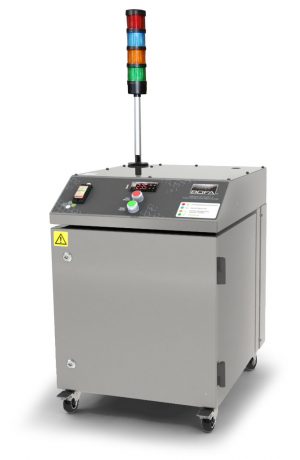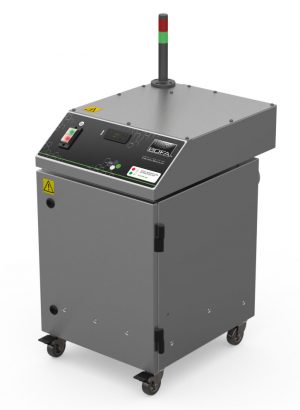Protecting investment in high temperature laser technology
As the move to fibre laser technology continues apace, particularly in FMCG markets, operators need to consider how best to mitigate the potential risks associated with this higher temperature process.
There’s no doubting the productivity benefits of fibre systems, particularly for use in laser coding and cutting operations, which has seen the adoption of fibre lasers increase rapidly in recent years. Fibre lasers are becoming more accessible, allowing coding onto metallic surfaces. Indeed, an Allied Market Research report predicts that the fibre laser market will be worth around $4.4 billion by 2025 – compared to $1.8 billion just over a year ago.
Fibre lasers penetrate deeper into base metal and coding production lines and are typically employed on lines for the marking of sell-by dates, product and tracking information, often running at 60,000 cans per hour, or more.
However, the higher temperatures associated with the technology can present a greater fire risk than other laser systems. Remember, without effective extraction, the laser can generate a large number of unoxidised particulates that can gather around the laser area, in hoses/ducting or in filters, or can act as a source of ignition for an object trapped in front of it.
The risk of fire in fibre laser applications is related to four simple principles:
- Lasers generate a large quantity of micron and sub-micron sized particles
- The smaller a particle the larger its surface area to mass ratio
- The larger the surface area, the faster the rate of reaction
- Aluminium and titanium possess highly exothermic oxidation reactions (fire)
While these might provide the conditions for combustion, a properly specified, installed and maintained fume extraction system will mitigate the risk, most notably through the addition of technology purpose-designed to prevent hot emissions reaching the main filtration unit.

For example, BOFA has recently developed the FireBOX GA (for general applications) and the FireBOX MA (for metal applications), a self-extinguishing inline pre-filtration solution positioned in advance of the fume extraction unit. Both are available in larger sizes for larger extraction systems. The FireBOX incorporates a temperature controller which automatically switches off extraction system power and closes electronic valves, should the pre-set ambient temperature be exceeded by 10°C. If the temperature rises another 10°C in the FireBOX, then the integrated fire extinguisher will be activated.

Then there’s BOFA’s new Spark Arrestor 2, which nullifies the risk presented by potentially damaging, incandescent particulate by transporting it through specially designed impingement plates until it drops into the removable drop-out chamber.
Both the FireBOX and Spark Arrestor 2 can be used as stand-alone units inline with the extraction system or can be combined to offer ultimate protection for the fume extraction filtration system, dependent upon the laser process and assessed risk. The risk is also mitigated by BOFA specifying high quality borosilicate media within its primary filtration unit.
These technologies help to design-out fire risks in lasering, particularly where a combustible dust can be generated by the process. While this type of thermal event is rare, aside from the risk to human health, any fire incident will inevitably lead to a disruption in production and the need to replace equipment…and this can quickly and unnecessarily negate the productivity benefits of faster processing speeds.


